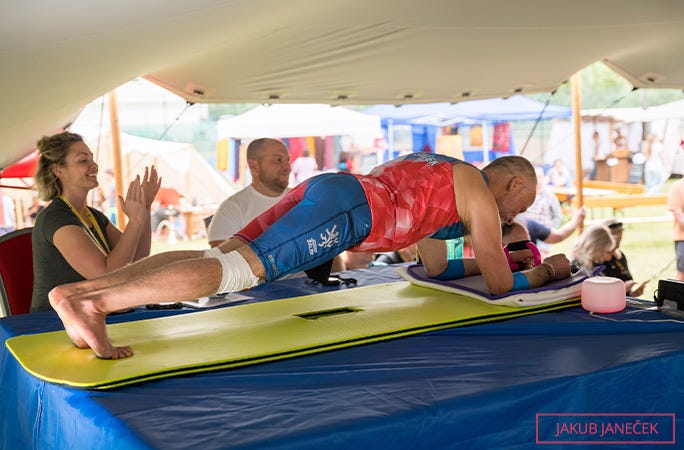Introduction
Planking, a seemingly simple exercise, engages multiple muscle groups and offers numerous benefits. This article explores the transformative experience of incorporating a 2-minute plank into a daily routine for 31 days. The challenge aimed to strengthen the core, improve posture, and test mental resilience. The following sections detail the weekly progress, challenges faced, and surprising lessons learned about consistency and discipline. Discover how this small daily habit can lead to significant improvements in physical and mental well-being.
Why a 2-Minute Plank?
The choice of a 2-minute plank was inspired by the ‘2-minute rule’ for building sustainable habits. This rule suggests that if something can be completed in two minutes, it should be done immediately to overcome procrastination. Planking for 2 minutes was chosen to engage the abs, shoulders, back, glutes, and legs, promoting overall body strength and stability. It’s about building a healthy habit, consistently.
If you see something that needs doing, and it can be completed within two minutes, do it immediately. — Osei Bismark
The Science Behind Planks
A 2014 study highlights that planks activate more core muscles than traditional crunches while reducing spinal strain. Holding a plank for 2 minutes is considered a benchmark for core strength, preventing back pain. Dr. Stuart McGill, a spine biomechanics professor, supports this idea, noting it as an ideal goal. Planks also improve posture, strengthen the lower back, enhance balance, and build mental endurance. The exercise is more than just an ab workout; it’s a comprehensive exercise.
Plank Guinness World Record
Josef Šálek holds the Guinness World Record for the longest plank, maintaining the position for 9 hours, 38 minutes, and 47 seconds. While this feat is extraordinary, it demonstrates the potential for human endurance and can inspire others to push their limits. The record highlights the incredible strength and mental fortitude required for such an accomplishment.

Basic Rules of the Plank Challenge
- Hold a forearm plank for 2 minutes every day (no skipping). A single skip day is allowed.
- Maintain proper form (hips level, core engaged, no sagging).
- No cheating — the two minutes must be continuous, without breaks.
- Track your progress.
Week 1: The Initial Struggle
The first week was challenging, with trembling arms and a screaming core. Maintaining posture was difficult, and the 2-minute goal seemed far off. Initial attempts lasted only 40–70 seconds, but perseverance paid off. By the fourth day, a 120-second plank was achieved, marking a significant improvement. Starting is often the hardest part, but consistency is key.
Week 2: Building Stamina
In week two, the 2-minute goal became attainable, and the abdomen felt like it was on fire. The back felt stronger and more in shape. Engaging the glutes helped relieve pressure on the lower back, demonstrating that planking is a full-body exercise, not just an ab workout. Around Day 10, the body started to adapt, making the plank feel more manageable.
Week 3: Surpassing Expectations
Week 3 saw unexpected progress, with plank times extending to 2.5–3.5 minutes. The exercise became enjoyable, and core strength noticeably increased. Despite occasional urges to skip, discipline prevailed, reinforcing the idea that consistency trumps motivation.
Biggest Takeaway: Discipline Over Motivation
The most significant lesson was that discipline is more reliable than motivation. Even on days when planking felt undesirable, adhering to the routine yielded results, highlighting the importance of consistency in achieving fitness goals.
Week 4: Reaching New Heights
The final week brought new personal records, with plank times reaching 4.5 minutes. The core felt stronger, and the burning sensation was less intense. A 30-day plank challenge is highly recommended for strengthening the back and core. Lower back pain disappeared, posture improved, and workouts felt stronger.
Did I Fail?
The challenge wasn’t perfect. Planking at the same time each day wasn’t always possible, but the 2-minute plank was completed within each 24-hour period. This flexibility made the challenge sustainable and adaptable to daily life.
Plank Results After 31 Days: Did It Work?
The 31-day plank challenge yielded significant results. Plank time increased from 35 seconds to 4.5 minutes, demonstrating improved core strength and stamina. The exercise can be done anywhere and anytime, strengthening the shoulders and legs. It also improved alertness and productivity during lunch breaks. While six-pack abs weren’t achieved, the stomach felt firmer, and a stronger mind-body connection was established.
Would I Recommend It?
Yes, with a few adjustments. Beginners should start with shorter holds (15–30 seconds) and incorporate side planks for oblique engagement. Planks should be paired with other core exercises for optimal results. Consistency and proper form are crucial for avoiding injuries and maximizing benefits.
Final Thoughts: What 31 Days of Planks Taught Me
The 31-day plank challenge was about consistency, discipline, and mental fortitude. The 2-minute daily commitment, though small, built strength and endurance over time. If you seek a tiny daily habit that delivers big rewards, consider incorporating planks into your routine. Your core and discipline will thank you. The plank exercise is a great way to strengthen your entire body, improve your posture, reduce lower back pain, and prevent injuries.
Book recommendation:
Join the Community
Join a community of like-minded people. Sign up to stay connected!
